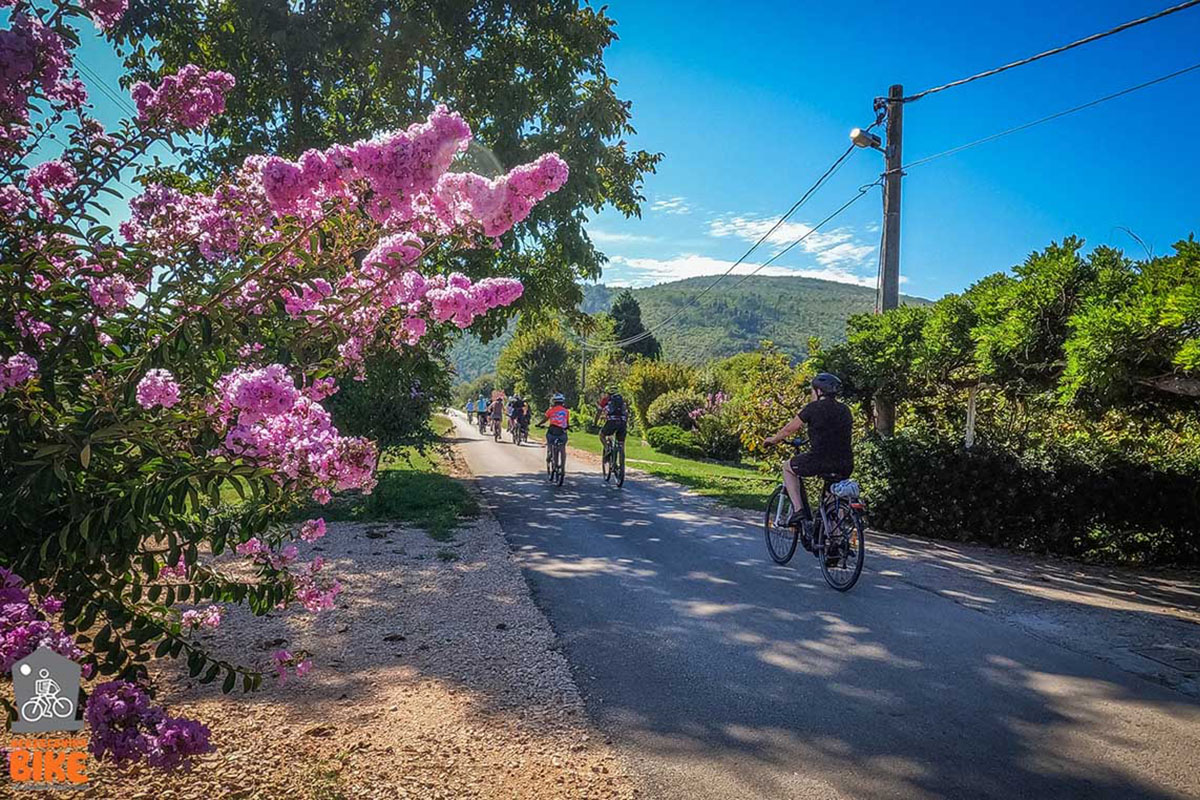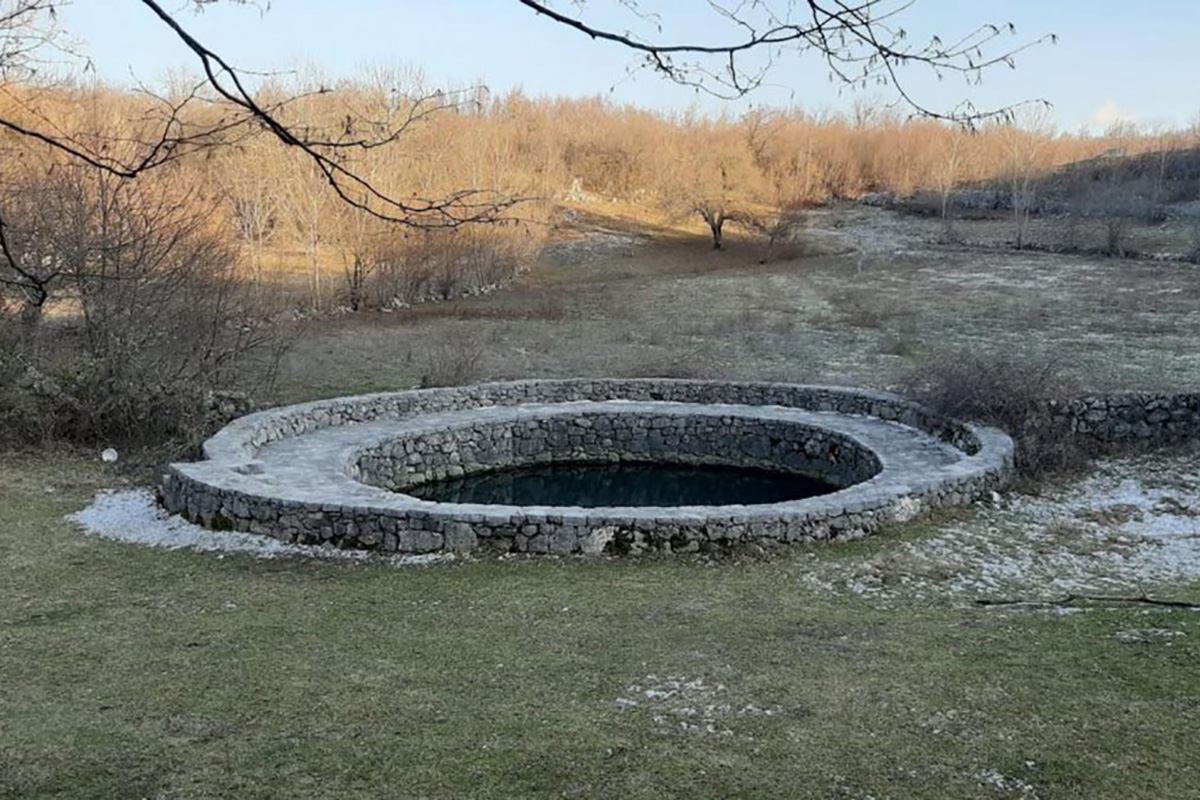The Palaeolithic site of Badanj is located below the village of Borojević near Stolac. It is located about 6 km as the crow flies west of Stolac. Podkapina is located in the rock, 45 m above the river Bregava. The Bregava river canyon is 18 km long and about 100 m deep in Eocene limestone, between Vidovo polje and Neretva. Usjek was used in Roman times as an important road between Narona and Dilunta (Vid-Stolac). Archaeologically, this site originates from the late Paleolithic - late Epigravettian, i.e. 13,000 to 12,000 years before Christ. The site was discovered in 1976. An engraving was found next to the hat, which is the first find of its kind on the eastern coast of the Adriatic.

Research from 1976 to 1979 revealed the main prehistoric periods at this site. In the second campaign of archaeological research from 1986 to 1987, several goals were set: analysis of the material by layers for the creation of a future detailed regional Paleolithic-Mesolithic chronology; reconstruction of the natural environment of Badnja, including paleogeographical conditions; creating a picture of the organization of activities within the community.
According to the Spatial Plan of the Republic of Bosnia and Herzegovina, the archaeological area of Badanj was recorded and valorized as a category I monument of national importance by the year.

Badanj is a very rich Paleolithic and multi-layered cave site. The archaeological site of Badanj is a subsoil with a shallow depression in the rock that descends steeply to the right bank of the Bregava. The archeologically relevant area is under the rock where the life of Paleolithic homo sapiens occasionally took place. Under the removed surface layer, two chronologically separate layers of Paleolithic settlement were found. In the upper layer of 0.8-0.9 m depth, 20 cultural-geological layers from two settlement phases belonging to the Late Paleolithic - Epigravettien were investigated. Below is a sterile layer of sipar, under which very scarce material, which probably belongs to the Middle Paleolithic, has been insufficiently explored. In the flint tool industry, which is mostly Epigravetian with typological continuity in all layers, the presence of numerous changes can define two phases, which are identical to the phases in the wider area of that time on the southern Adriatic coast and the Ionian coastal area in Italy.
The fauna of the area shows significant changes in the mentioned period. Deer are predominately represented, goats and ibex are relatively widespread in the earlier phase, and wild boars and roe deer predominate in the later phase. This fact points to the diversity of the climate in that period, which also influenced the mentioned cultural changes. However, analysis of the number of bones found shows that small groups of hunters lived on Christmas Eve, or communities only for a short time, or both. According to numerous finds of young deer (up to a month old in the period when they do not have antlers) and a smaller number of deer antler artifacts, it is certain that human communities lived here periodically, mostly from March to June.

The arrangement of the artefacts and animal remains led to a sketch of the general picture of the activity in the settlement. At the bottom of the abri, there was a hearth around which almost all the activities of the inhabitants took place: in addition to preparing food, leather was prepared here, bone and stone tools and beads from deer teeth were made here. It was eaten by the hearth, but also in the wider area of the abria, where animals were butchered and more complex tools were repaired. According to faunal analysis and paleogeographical reconstruction, the number of groups that could meet life's needs here amounted to 10-15 people. Namely, according to the estimates of the remains, around 14 to 17 people could be fed annually on Christmas Eve. As the researchers point out, "If these reconstructions are correct, then this site represents only a small part of the system of human settlements in this area from the Late Paleolithic period" (Whallon, 1989, 20), that is, in the time range from 14,000 to 10,000. B.C. Near Božić there are two other ditches (reconnaissance and unexplored), Red Cave and Drenovačka Cave.
The discovery of a carved drawing in the rock of the Badanj locality, which is one of the oldest artistic monuments in Bosnia and Herzegovina, is particularly significant. The drawing is partially damaged. It is carved into the slanted surface of a large polished stone block broken off from the cave massif. Its surface is inclined from west to east about 30 degrees. The drawing is located in the southwest corner of the rock and probably represents the figure of a horse viewed from the right side attacked by arrows. Only the back half of the body with the thighs typical of a horse and part of the trunk has been preserved, while the other drawings have been destroyed. The depth of the cut is 5 mm. The engraving of the Christmas Eve horse was not an anatomically perfectly reproduced figure, which was not important for the man of that time. What the team has to say is more important to him. The topics were mostly hunting content. The basis of the theme of this art was the visual mastery of animals, the symbolism of supremacy over nature and the world of magic.
It is assumed that the damage to the engraving originates from the Paleolithic era. Namely, the stone was discovered only when soil was removed from the cave (when collecting fertilizer for the surrounding fields). Until then, the stone was covered with an intact layer of earth in which remains from younger periods were found, with which the cave was buried over time.
The Badan engraving contains the depiction of an animal and signs typical of the area of Mediterranean art of Paleolithic man. Engravings similar to this one are found in considerable numbers in Sicily, Calabria and Apulia. The sea level at that time was 100 to 150 meters lower than it is now, which enabled people to communicate by continental route. Similar works can be expected in the coastal cities of Montenegro, Albania and Greece.
Do you want to experience Badanj - a Paleolithic site, enjoy the stunning architecture, picturesque views of the town on the Bregava River and learn all about its rich history? Contact our partners - ERO Travel Tour Agency.
ERO Travel teamprofessionals will create a trip according to your preferences.







